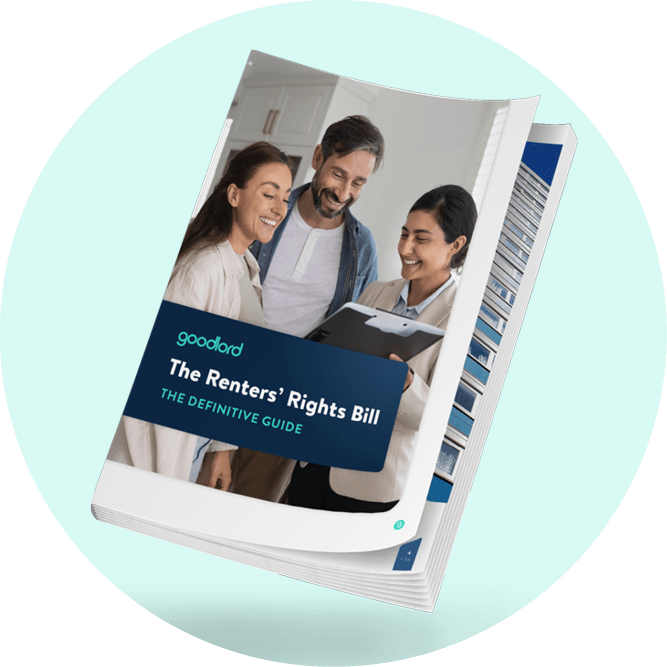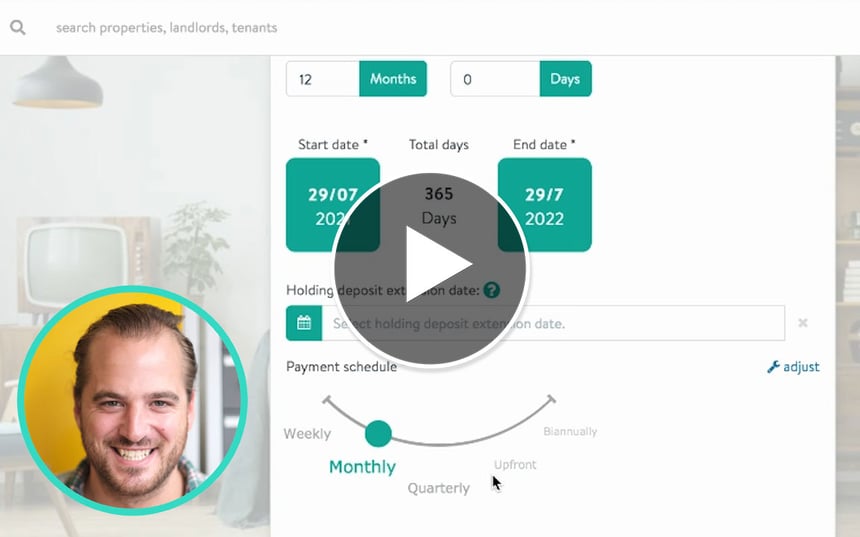Void period: How to add £19.7K to your profit margin
Time is money when it comes to void periods. Here's how to calculate the costs of yours, take steps to reduce them, and use them effectively.
According to Goodlord’s Rental Index, the average void period in England hovers between 18 and 21 days. But in a perfect world, this figure would be zero.
After all, landlords still have to pay for their properties’ mortgages, bills, insurance, maintenance, and taxes while waiting for a new tenant to move in.
Meanwhile, longer void periods mean higher marketing costs for agents, and you also risk losing landlords to competitors who promise quicker turnarounds.
Although, in some cases, void periods are unavoidable, you can take practical steps to reduce them significantly. And by doing so, you can add almost £20K to your profit margin.
In this blog, I'll tell you exactly how to do that and much more.
- What is a void period?
- Average void period in England: 5-year overview
- How to calculate the cost of void periods (formula)
- 3 tried-and-tested tips to slash void periods (by up to 10 days)
- How to maximise the void period
- The impact of the Renters' Rights Bill on void periods
- How Goodlord can help you reduce the void period
What is a void period?
Void periods happen when a rental property is unoccupied. Typically, they occur when the old tenant moves out and the new tenant is yet to move in, meaning no rent is being paid. However, void periods can also be the result of a property that:
- Needs urgent repairs
- Doesn’t comply with the law
- Is being marketed for the first time
Average void period in England: 5-year overview
Over the last 5 years, most regions have seen a reduction in void periods, with the North East and South East showing the most significant improvements. Some areas, like the South West and West Midlands, have experienced more stability with occasional fluctuations.
Greater London has seen the most variability, with a significant increase in 2020 followed by a drop in 2022 and a slight increase in 2024.
While there are regional variations, the average void period in England has come down to 18 days in 2024 from 21 days in 2019.
| 2019 | 2020 | 2021 | 2022 | 2023 | 2024 | |
| East Midlands | 25 days | 22 days | 22 days | 20 days | 21 days | 21 days |
| Greater London | 14 days | 18 days | 18 days | 13 days | 13 days | 15 days |
| North East | 23 days | 19 days | 18 days | 16 days | 15 days | 17 days |
| North West | 21 days | 21 days | 22 days | 18 days | 18 days | 17 days |
| South East | 20 days | 18 days | 17 days | 16 days | 17 days | 18 days |
| South West | 18 days | 21 days | 18 days | 18 days | 17 days | 18 days |
| West Midlands | 24 days | 26 days | 20 days | 20 days | 20 days | 21 days |
| England Average | 21 days | 21 days | 19 days | 17 days | 17 days | 18 days |
This decline in void periods is good news for landlords and agents alike, as shorter vacancies mean steadier rental income and fewer financial losses. Still, every day a property stays unoccupied comes at a cost 👇
How to calculate the cost of void periods (formula)
To understand just how much of an impact extended void periods have on your bottom line, let’s take a look at an example:

Imagine you’re managing 200 properties with an average annual rent of £15,000 each.
If each property experiences an average of a 20-day void period, that would result in a loss of £164,000 in rental income.
Given that an average agent's fee is around 12% of the annual rent, this translates to a loss of £19,680 in commission.
Simply put, by effectively managing void periods, you can add almost £20,000 to your profit margin per branch.
If you’re running a multi-branch agency, this can quickly add up. For example, a 10-branch agency could add around £200,000 to its profit margin.
3 tried-and-tested tips to slash void periods (by up to 10 days)
Some of the main reasons why void periods happen include:
- Failing to secure new tenants in advance
- Setting rents above the market rate
Here are the practical steps you can take to prevent both of these...
1 - Identify proceedable tenants
Most agents book viewings on a first-come, first-served basis, often spending hours showing properties to tenants who may not even pass referencing.
By the time you return to other interested parties, they’ve often found somewhere else, which extends the void period.
Pre-qualification flips this process. Here, you create a database of proceedable tenants by having applicants complete a pre-qualification form that answers questions about:
- Income
- Employment status
- Move-in timeframe
- Suitability
When a property becomes available, you can immediately match it to a proceedable tenant who's already pre-qualified.
2 - Remove wastage from your tenancy process
To minimise void periods, you need to understand where inefficiencies exist and how you can eliminate them. Many agents never go through their own rental process as a prospective tenant would. If you did, you’d realise how cumbersome and time-consuming the process can be. For example:
- Are your agents slow to respond or follow up over email?
- Are your communications inconsistent and confusing, with multiple agents liaising with prospective tenants?
- Are your listings up to date and free from surprises that could cause proceedable tenants to withdraw from the process?
- Is your referencing provider taking too long or delivering incomplete checks?
- Are errors commonplace in your paperwork due to poor version control/document management?
Identifying and removing wastage can shave 5-10 days off the process, increasing overall efficiency and profitability.
3 - Help landlords make smart decisions
Landlords often resist lowering rent, fearing financial losses. But you should demonstrate how a small reduction can be beneficial. For example, lowering the rent from £2,000 to £1,900 can help secure a tenant quickly, avoiding the larger loss of a vacant property.
To help landlords make informed decisions, you should arrange review meetings where you compare similar properties, using data from the Goodlord Rental Index to accurately benchmark your prices.
How to maximise the void period
In the intro, I said the ideal void period would be zero. This was tongue-in-cheek, and in most cases, a short void period is inevitable. When they come around, you should view them as an opportunity, rather than a burden.
This is because they allow you to make key property upgrades without disrupting or evicting tenants. Here are the high-value activities I suggest you:
Make essential upgrades and ensure compliance
Since the onset of COVID, tenancy lengths in the UK have increased, averaging 924 days in 2024 compared to 706 days in 2020. This means that opportunities to carry out major upgrades are becoming increasingly rare.
As a result, void periods are the ideal window to carry out any overdue inspections and make sure the property meets all safety and regulatory standards.
For instance, if a property falls below the required EPC rating of E, landlords should use this time to start making incremental improvements, ideally working towards a C rating for long-term compliance.
Other maintenance and upgrades are far easier to make and more cost-effective when the property is vacant. These include:
- Gas safety inspections
- EICR inspections
- Plumbing issues
- Pest issues
Delaying essential work could leave landlords either paying for alternative accommodation or tackling more complex eviction processes to gain access when the Renters’ Rights Bill becomes effective. After all, Section 21 is being abolished and all eviction notices will need to be processed by already-congested courts.
Deep clean the property
The condition left by the outgoing tenant can significantly impact how quickly a property is re-let. No matter how well you pre-qualify tenants or adjust the price, a property won’t attract new tenants if it doesn’t make a great first impression.
You should hire trusted cleaning services to ensure properties are in top condition for viewings. They can turn around a property in 24 hours, making sure prospective tenants see the home in its best possible state.
Make superficial improvements
Beyond cleaning the property, making other superficial improvements can help you set every tenancy up for success. This includes:
- Freshening up the interiors with a lick of paint
- Addressing structural issues like leaks, cracks, or damaged flooring to keep the property in top condition
- Ensuring doors and windows are in good working order and replacing or repairing any faulty ones to improve security and energy efficiency
- Making sure appliances like the oven, fridge, and washing machine are in good working order
- Enhancing spaces like gardens and outdoor areas to improve the property’s appeal
The impact of the Renters' Rights Bill on void periods
Void periods are likely to increase due to the Renters’ Rights Bill. Here’s a closer look at why:
Extended notice periods
One of the most significant changes suggested by the Renters’ Rights Bill is that tenants now have to give landlords two months' notice before moving out, rather than one month.
This means the property will not be available for re-letting during those two months. As a result, there is a longer gap before new tenants can move in.
Potential tenants may either have to wait longer for properties to become available or opt for other properties that are ready for immediate occupancy, leading to an extended void period.
Replacement of fixed terms with periodic tenancies
As I touched on in the ‘How to maximise the void period’ section, tenants generally prefer to stay for longer periods in rental properties.
However, the introduction of the Renters’ Rights Bill opens up a loophole for those who prefer shorter-term arrangements. This is because tenants can immediately serve two-months’ notice as soon as their tenancy begins.
In these cases, void periods could extend, while the admin you need to complete will increase. For example, you could find yourself conducting meter readings, sorting out council tax, handling maintenance issues, and marketing properties much more frequently.
How Goodlord can help you reduce the void period
If you want to reduce the void period, Goodlord can help:
- Pre-qualification - our pre-qualification process ensures that only viable tenants are shown the property. This saves time and resources by focusing on those who are most likely to proceed.
- Tenant pipeline - we help you maintain a database of pre-qualified tenants, so you can quickly match new properties with suitable candidates, even before they’re listed on the market.
- Move-in and move-out services - we cover standing charges for utilities in the void period and also handle the process of changing gas, electricity, council tax, water and document it to save time.
- Safe2 partnership - use our partnership with SAFE 2 to purchase any updated property documents and streamline the process of collecting the new certificates.
Hit the banner below to learn more 👇
This article is intended as a guide only and does not constitute legal advice. Visit gov.uk for more information.






.png)




